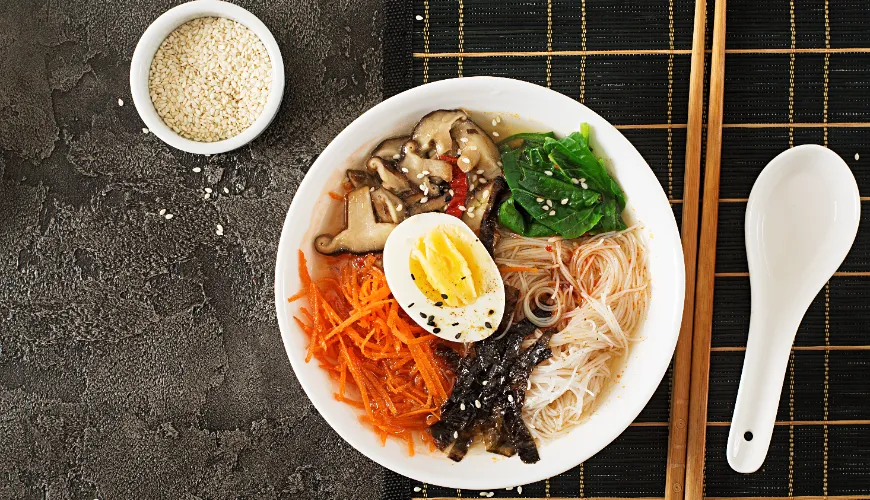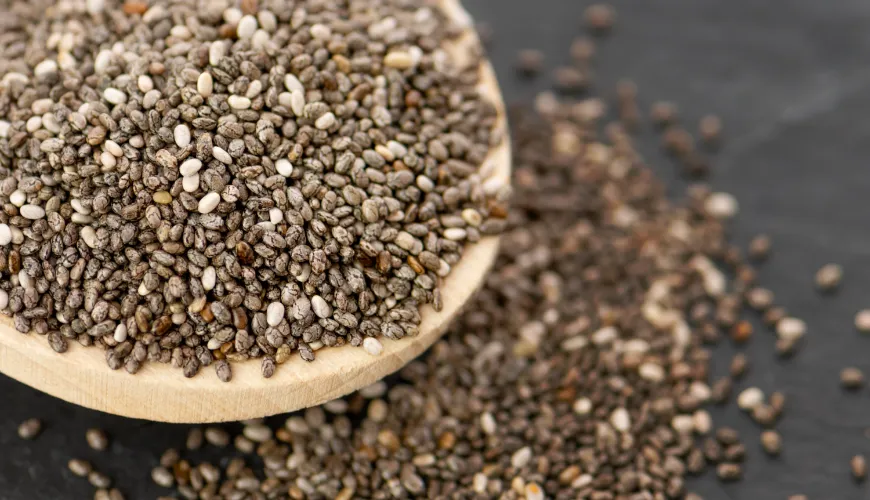
Enhance your dishes with Japanese miso paste

Miso Paste as a Culinary Treasure from Japan
Miso is a fermented paste made from soybeans, rice or barley, salt, and a special fungus, Aspergillus oryzae. This traditional Japanese ingredient is known for its rich and complex flavor, which adds depth and umami to dishes. Miso paste is a key component in many Japanese dishes, with its use dating back thousands of years.
Miso paste originates from Japan, where it has deep roots in the culinary history of the country. Its production and consumption are firmly embedded in Japanese culture and tradition. In the past, miso paste was considered a luxury item, available only in monasteries and to the wealthier classes of society. Today, miso is widely available and used around the world.
Why is Miso Paste So Good?
There are several reasons why miso paste is considered a healthful food:
Miso is rich in probiotics, which support healthy gut flora. This contributes to better digestion and overall gastrointestinal health. Thanks to these probiotics, intestinal efficiency is enhanced, which can positively impact the overall well-being of the body.
This fermented product contains a range of vitamins and minerals, including B vitamins, vitamins E and K, and folic acid. These vitamins are essential for many bodily functions, including proper metabolism and maintaining healthy skin. The presence of these nutrients makes miso a valuable component of a balanced diet.
Additionally, miso is packed with antioxidants, which help fight free radicals and reduce the risk of chronic diseases. Its high protein content and essential amino acids make miso a good source of nutrients for vegans and vegetarians seeking alternatives to animal products.
History of Miso Paste
Miso has a rich history dating back to ancient China, from where it was introduced to Japan in the 6th century AD by Buddhist monks. In Japan, miso quickly became a staple of the diet, particularly in temples and noble families. Over the centuries, the production of miso paste evolved into various regional styles, each with its specific flavor and texture characteristics.
The Process of Making Miso Paste
The production of miso paste involves several key steps:
Soybeans are first soaked and cooked to prepare them for further processing. They are then mixed with rice or barley that has been inoculated with the Aspergillus oryzae fungus. This resulting mixture is called koji.
The koji mixture is then placed in containers, where fermentation occurs for several months to years. This process is crucial for developing the characteristic flavor and aroma of miso paste, as it breaks down the components and develops specific properties.
After fermentation, miso is left to age, which can also take several months to years, depending on the specific type of miso. Aging allows miso paste to achieve the desired consistency and flavor profile, which is important for its final use in cooking.
Traditional producers use cedar barrels, which can be over a hundred years old. These barrels impart a specific and rich flavor to the miso. The production of hatcho miso, one of the most traditional and darkest varieties, can age for up to three years.
Types of Miso Paste
There are several types of miso paste, differing in color, flavor, and fermentation time:
- Shiro miso (white miso): Has a mild and sweet flavor and ferments for a short time, typically several months.
- Aka miso (red miso): Ferments longer, giving it a stronger and saltier flavor.
- Hatcho miso: Made only from soybeans and salt, it ferments for up to three years. It has a very dark color and intense flavor.
Each type of miso has its specific uses in the kitchen and is suitable for different types of dishes. For example, white miso is ideal for milder dishes, while red miso adds a more intense flavor to meals such as hearty soups and stews.
Using Miso Paste in Cooking
Miso paste is very versatile and can be used in various dishes. It is most commonly used in soups, sauces, marinades, or as a base for dressings. In addition to traditional miso soup, miso can be used in pumpkin soups, bean dips, or as a seasoning for vegetable dishes.
When using miso paste, it is important not to cook it after adding it to the dish, as high temperatures can destroy the beneficial enzymes and bacteria developed during fermentation. Therefore, it is ideal to add it at the end of cooking. For instance, in the preparation of miso soup, miso paste is added just before serving to preserve all its nutritional values.
Health Benefits of Miso Paste
Fermented foods like miso are rich in probiotics that support a healthy gut flora. Regular consumption of miso paste can contribute to better digestion, strengthen the immune system, and improve overall health. Additionally, it contains B vitamins, vitamin E, K, and folic acid.
Traditional and Modern Applications of Miso Paste
In traditional Japanese cuisine, miso is a staple ingredient for making miso soup, which is often served for breakfast. Miso soup is a combination of miso paste, dashi (broth), tofu, seaweed, and vegetables. This simple yet nutritious dish is popular not only in Japan but also worldwide.
In modern cuisine, miso paste is used in a wide variety of dishes. Besides soups and sauces, miso can be added to desserts, baked goods, or even beverages. Miso caramel, miso chocolate, or miso smoothies are just some of the innovative ways this versatile paste can be utilized.
Recommendations for Storing Miso Paste
Miso paste should be stored in a cool, dark place, ideally in the refrigerator, to preserve its flavor and nutritional properties. A sealed container will help prevent air exposure, which can affect the fermentation process and flavor of the paste. Properly stored miso can last for months to years without losing its quality.
Miso paste is an indispensable part of Japanese cuisine, and its unique flavor and health benefits are winning the hearts of cooks around the world. Whether you are a fan of traditional Japanese cuisine or looking for new ways to enhance your dishes, miso is a great choice. Try different types and discover which one suits you best. Fermentation and traditional production processes ensure that each type of miso paste offers a unique flavor experience worth exploring.
Miso is more than just an ingredient – it is a piece of Japanese culture and history that you can bring into your kitchen to enrich your dishes with authentic and rich flavor.

